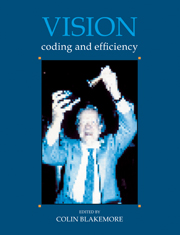Preface
Published online by Cambridge University Press: 05 May 2010
Summary
By the end of the nineteenth century the mood of sensory physiology was marvellously mechanistic. Sir Charles Bell and Johannes Müller set the scene in the 1830s with their evidence for a direct and automatic link between the stimulation of particular sensory nerves and the resulting perceptions; but even then there was a dissenting voice. In volume 3 of his Treatise on Physiological Optics Hermann von Helmholtz drew attention to many problems in a simplistic interpretation of the relation between sensory messages and perception. He pointed out that ‘without any change of the retinal images, the same observer may see in front of him various perceptual images in succession’. ‘We are not simply passive to the impressions that are urged on us, but we observe.’ Equally, the generalities of experience that we can express in single words correspond to an infinity of precise patterns of sensory stimulation: ‘the species “table” includes all individual tables and expresses their common peculiarities’. Helmholtz concluded that the processes underlying perception were essentially inductive, learned, but below the level of consciousness: ‘by their peculiar nature they may be classed as conclusions, inductive conclusions unconsciously formed’.
No wonder that Helmholtz's revolutionary views were anathema to many physiologists and philosophers of the time. They flew in the face of the prevailing notion of the innate basis of knowledge and experience, which linked such heavyweights as Ewalt Hering and Immanuel Kant. But Helmholtz's appeal to the inferential, learned nature of perception echoed the much earlier views of the empiricist philosophers, most especially George Berkeley, and presaged the ideas of the buoyant new field of cognitive psychology.
- Type
- Chapter
- Information
- VisionCoding and Efficiency, pp. x - xiiPublisher: Cambridge University PressPrint publication year: 1991



